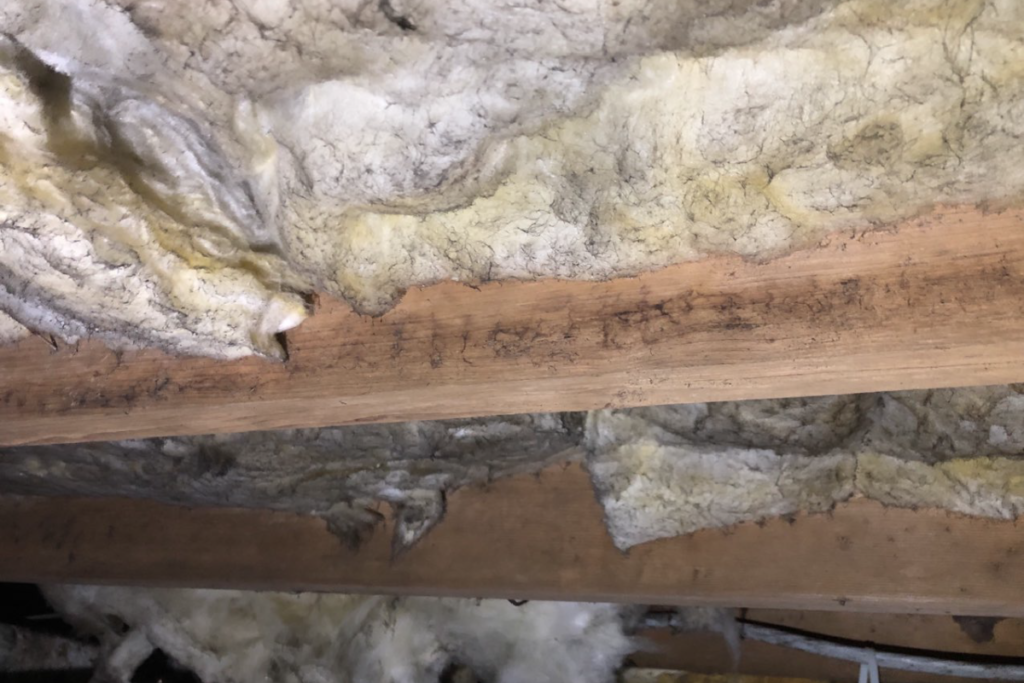The Insulation Removal Process
Why should you remove old or damaged insulation?
If your home is struggling to regulate temperature, there are musty smells in your home, and/or your energy costs have increased, then it is time for a moisture management professional to evaluate the condition of your home’s insulation. These are symptoms of compromised insulation and can be quickly remedied with a professional.
Lower energy bills
Higher energy costs are often a sign that your home’s insulation is damaged and not operating to its full potential. This is due to how much simpler and less expensive it is to heat and cool your home with good insulation. When your insulation has gaps, outside air can enter through the walls and change the temperature inside. It should come as no surprise that turning up the heat in the winter and the air conditioner in the summer doesn’t do your wallet any favors. Therefore, investing in the removal of inefficient insulation and the installation of more efficient insulation will ultimately result in cost savings and improved house efficiency.
Pests/Rodents
Old, damaged insulation can actually become dangerous once pests or rodents are involved. Older homes frequently have rodent infestations, especially in areas with little usage, such as attics, basements, or crawlspaces. Furthermore, a small mouse population can easily develop into a rodent infestation. By letting unwanted pests run a muck with your insulation, they can spread bacteria and illnesses throughout your home. If you find evidence of pest activity anywhere in your home’s insulation, it’s imperative that you have it removed and replace it with something more hygienic.
Contamination

In addition to the risk of contamination that comes with pests and rodents, damaged insulation can create the perfect environment for mold and mildew growth. Chances are that if your home’s insulation is damaged that it didn’t happen on accident or on its own. Typically, damaged insulation is a result of poor moisture and ventilation management. Insulation that has been contaminated can lead to poor indoor air quality throughout your house and increase your risk of leaks and water damage.
If you’re unsure if your home is experiencing any of these issues but your home is older, we still recommend having a comprehensive evaluation done so that you can be ahead of any issues before they turn into greater, more costly ones.
A moisture management professional will be able to evaluate the current conditions of your home’s insulation and give recommendations based on the current conditions and things that may come up in the future.
How does the removal process work?
Preparation
Removing damaged insulation can be a messy job so it’s important to be properly prepared. With the right precautions in place, our team can ensure that your home remains clean, safe, and sanitary throughout the process. This may, or may not, include laying down plastic sheeting, moving furniture and other personal belongings out of the area, setting up a secure vacuum outside of the home, and more.
Removal
The actual removal process will depend on the type of insulation within your home. For instance, if your home has blown-in insulation, our technicians will need to vacuum it out. We position the vacuum in a safe place outside your home and a hose is attached and brought into the insulated space. The old insulation will then be completely vacuumed out, along with any debris that may have spread throughout the procedure, by our team. Without spreading any contamination throughout the rest of your house, the old material will move through the safe hose and be dumped into insulation removal bags. When properly executed by skilled insulation professionals, this technique is secure, safe, and hygienic. For other types of insulation, it is removed the old-fashioned way: by hand.
Replacement
Once the old product is removed, it’s ready for new insulation to replace it. Depending on the area of your home that you are insulating and your needs, this can look very different from room to room or even from house to house. For instance, fiberglass insulation is often recommended for attics while mineral wool insulation is recommended for crawlspaces. A skilled insulation technician will be able to discuss all of your options with you and come up with a game plan.
Insulation Removal & Installation by Jersey Shore Crawlspace Enhancement
At Jersey Shore Crawlspace, we know that it is common to experience issues with your home’s insulation. Whether you are remodeling or have uncovered a roof leak or similar problem, we can help. Our expert team understands the importance of removing old insulation before replacing it.
We will discuss all of your options so that your home remains comfortable throughout all seasons of the year. Our insulation services will help you lower your energy costs by keeping the cool air inside during the summer and by keeping the warm air from escaping during the winter. In the event that you have old insulation that contains dangerous material, we have the equipment and know the proper protocol for safe removal.
Click the button below to speak to a representative or complete the form at the bottom of this page and one will reach out to you.
